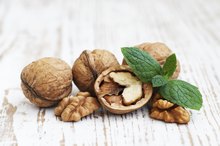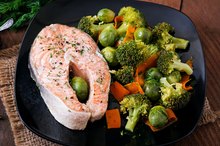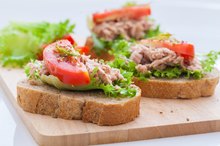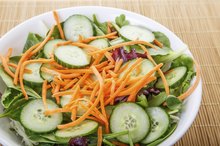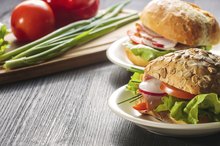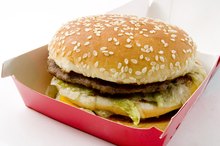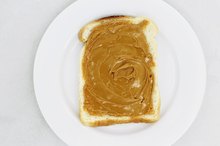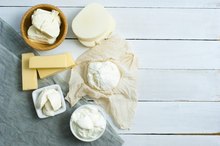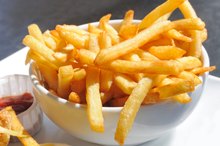A Diabetic Diet After Gallbladder Removal
Gallbladder problems occur fairly frequently in people with diabetes, so if you're a diabetic and you've recently had your gallbladder removed, you're not alone. While you tried to cope with your diseased gallbladder before your surgery, you probably needed to cut back on fat in your diet to minimize symptoms. After gallbladder removal surgery -- known in medical parlance as cholecystectomy -- your doctor may tell you to gradually return to your previous diet, perhaps with an emphasis on certain nutrient groups. However, because you have diabetes, you'll need to continue to carefully watch what you eat. Fortunately, the diet for gallbladder removal patients and the diet recommended for diabetics contain many of the same elements.
Diet Basics
Following your gallbladder removal surgery, you may find you have difficulty digesting meals that contain a lot of fat. That's because your gallbladder's primary function was to help you process fats. You may experience diarrhea following meals, especially particularly fatty ones. So, steer clear of fried foods to prevent digestive problems, and skip fatty sauces and gravies, as they contain too much fat. Because you're diabetic, stick with healthier fats in small quantities. For example, choose olive oil instead of butter for stir fries, and consider having fish for dinner instead of meat, because fish contains healthy fats known as omega-3 fatty acids. Limit your fat at each meal to 3 grams or less to avoid digestive problems.
- Following your gallbladder removal surgery, you may find you have difficulty digesting meals that contain a lot of fat.
Fiber
Diet for Gallbladder Sludge
Learn More
You may know that a high-fiber diet can help you manage your diabetes by stabilizing and normalizing your blood sugar levels. In addition, getting plenty of fiber may help your digestive system normalize your bowel movements following gallbladder removal surgery, reducing the incidence of diarrhea and constipation. The American Diabetes Association recommends you get at least 25 grams of fiber each day 2. Don't try to add all that fiber to your diet at once, or you may experience painful bloating and gas. Ramp up your fiber intake slowly over two to three months, and slow down if it causes symptoms.
- You may know that a high-fiber diet can help you manage your diabetes by stabilizing and normalizing your blood sugar levels.
- In addition, getting plenty of fiber may help your digestive system normalize your bowel movements following gallbladder removal surgery, reducing the incidence of diarrhea and constipation.
Healthy Foods
Both diabetics and people who have had their gallbladders removed should eat plenty of fruits, vegetables and whole grains. The American Diabetes Association recommends eating nonstarchy fruits and vegetables, such as greens or broccoli, with every meal 2. If you eat fruits and vegetables in a range of colors, you'll have plenty of variety and get plenty of valuable nutrients, too. Fortunately, fruits, vegetables and whole grains contain lots of fiber; for example, a slice of whole-grain bread has 2 to 3 grams of fiber per slice, a bowl of oatmeal has 4 to 5 grams and 1 cup of cooked broccoli has 4 to 5 grams.
- Both diabetics and people who have had their gallbladders removed should eat plenty of fruits, vegetables and whole grains.
Considerations
What Foods to Eat With a Reduced Gallbladder Ejection
Learn More
Although nonfat dairy products, such as milk and yogurt, provide much-needed calcium and part of a healthy diabetic diet, there's a catch: some gallbladder removal patients find they can't digest dairy well following their surgery. If you try dairy products shortly after your gallbladder is removed and you find they bother you, try them again a few weeks later to see if the problem has resolved itself. If it hasn't, you'll need to get your calcium from other sources. Greens, such as spinach and kale, contain some calcium, but you may need to take a supplement to get all the calcium you need. Talk to your doctor about your specific situation and whether you should use a supplement.
- Although nonfat dairy products, such as milk and yogurt, provide much-needed calcium and part of a healthy diabetic diet, there's a catch: some gallbladder removal patients find they can't digest dairy well following their surgery.
- Greens, such as spinach and kale, contain some calcium, but you may need to take a supplement to get all the calcium you need.
Related Articles
References
- NetWellness.com; Diet After Having My Gallbladder Removed; Lisa Cicciarello Andrews; January 2008
- University of Texas Southwestern Medical Center; Health Watch -- Fiber and Diabetes; March 2004
- Cleveland Clinic. Gallbladder and biliary disease. Updated August 2010.
- MyHealth.Alberta.ca. Gallstones: Should I have gallbladder surgery? Updated November 7, 2018
- Cleveland Clinic. Gallbladder and biliary disease. Updated August 2010.
- American College of Surgeons. Cholecystectomy. Updated 2015.
- Cleveland Clinic. Bile duct exploration. Updated August 9, 2019.
- MyHealth.Alberta.ca. Gallstones: Should I have gallbladder surgery? Updated November 7, 2018
- Victoria State Government. Better Health Channel. Gallbladder-gallstones and surgery. Updated August, 2014.
- University of California San Francisco (UCSF). Choledochal cysts. Updated 2020.
- American Cancer Society. Surgery for gallbladder cancer. Updated July 12, 2019.
Writer Bio
J.M. Andrews has been a professional journalist for more than 20 years. She specializes in health and medical content for consumers and health professionals. Andrews' background in medicine and science has earned her credits in a wide range of online and print publications, including "Young Physicians" magazine.
